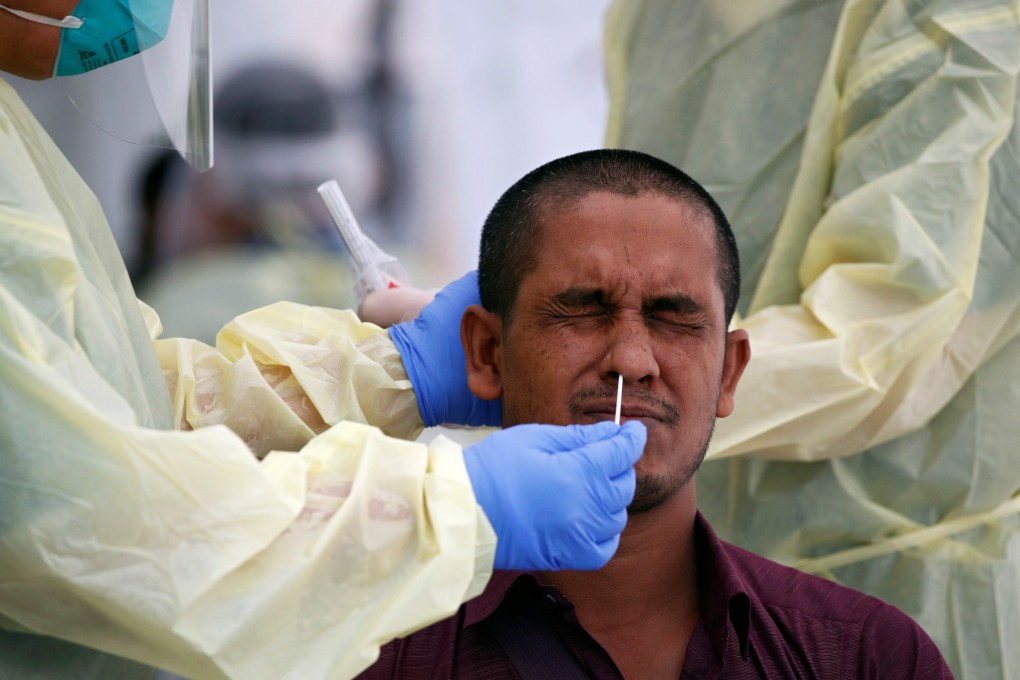Singapore coronavirus cases to ‘taper down significantly’ as migrant workers’ testing ends
- The only migrant workers still needing to be tested are the 9,700 or so in quarantine who had been in close contact with other sick workers
- Infections among the rest of Singapore’s populace have fallen to just a handful – though experts warned residents to keep their guard up

From a peak of 1,426 new cases in one 24-hour period on April 20, Singapore now records between 200 and 400 new infections each day, on average. Occasional spikes, such as the 908 cases reported on Wednesday, have been caused by a greater proportion of workers being infected in some dormitories than others, according to the government.
As of Friday, the only migrant workers still needing to be tested for Covid-19 were the 9,700 or so who had been in close contact with other sick workers, the health ministry said. These workers are currently in quarantine facilities and will be tested before being allowed to return to work at the end of their 14-day isolation periods.
Education Minister Lawrence Wong, who co-chairs the multi-ministry task force set up to coordinate Singapore’s virus response, said case numbers were likely to vary over the coming days and “perhaps over the next two weeks” as the 9,700 workers come out of isolation. “Thereafter we do expect the number of cases to taper down significantly,” he said.

The living conditions of low-wage migrant workers, who now make up more than 90 per cent of Singapore’s 54,555 infections, has become a matter of national debate since the virus began tearing through their dormitories in April, with reports describing kitchens infested with cockroaches and bathrooms with overflowing urinals.